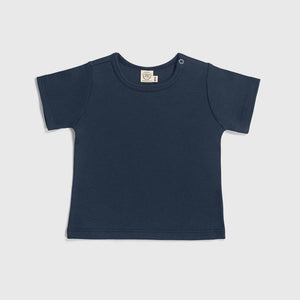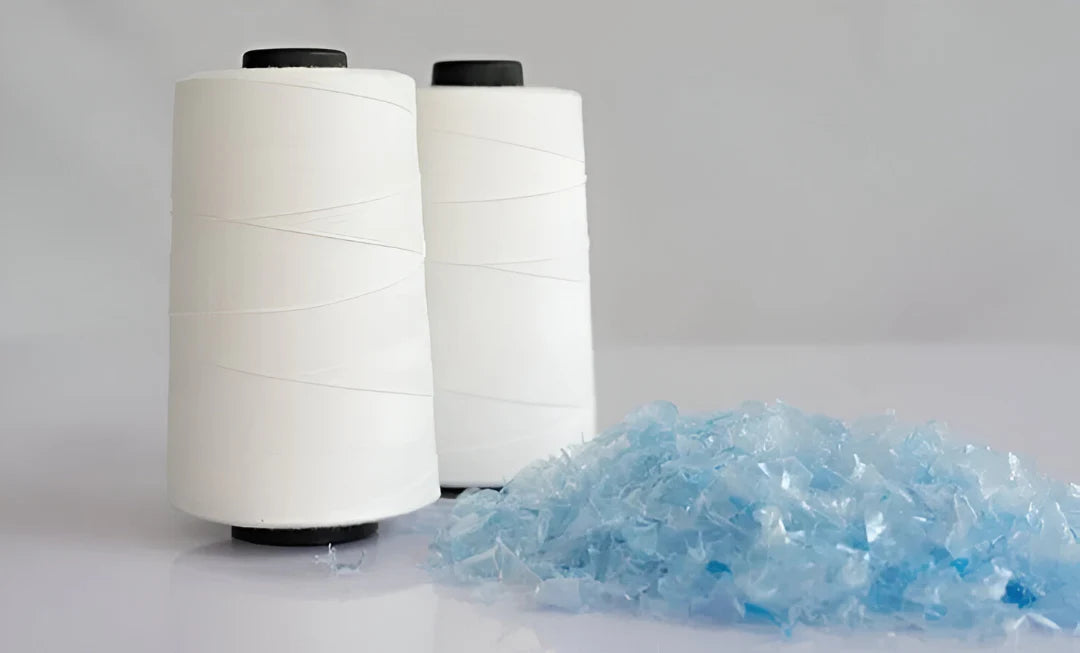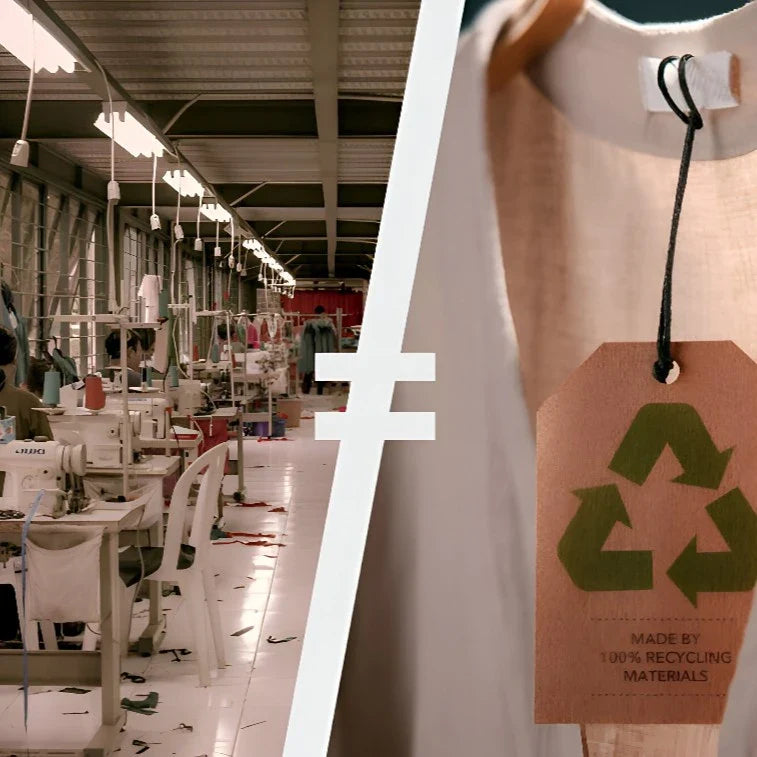Guardians of Life:
The Hidden Power and Crisis of Tropical Forests
.
AYA | APRIL 11, 2025
READING TIME: 5 minutes
By Jordy Munarriz & Lesia Tello
AYA | APRIL 11, 2025
READING TIME: 5 minutes
By Jordy Munarriz & Lesia Tello
In the context of Earth Month, this article critically examines the benefits of tropical forests, the dual-edged impact of industries such as fashion and petroleum extraction, and the initiatives and policies that are either aiding in their preservation or exacerbating their decline.
The Benefits and Wonders of Tropical Forests
Tropical forests are unrivaled in their complexity and importance. They cover approximately 7% of the Earth’s surface yet harbor over 50% of the world’s terrestrial species [1], contributing to the livelihoods of millions of people by providing food, medicine, and raw materials.
The Vital Ecosystem Services Of Biodiversity
The unparalleled biodiversity of tropical forests is fundamental to the well‐being of our planet. These forests harbor an immense array of species—from minute microorganisms to formidable mammals and towering trees—that coalesce into intricate ecological networks. For example, the Amazon tropical forests alone are estimated to contain around 16,000 tree species and 390 billion individual trees, collectively sequestering vast quantities of carbon that significantly temper global warming [2]. Moreover, the densely woven vegetation plays an indispensable role in regulating the hydrological cycle by modulating water flow and safeguarding the availability of fresh water for both ecosystems and human communities.
Critical analyses further underscore that suboptimal land management practices can curtail carbon sequestration potential by as much as 35% [3]. Similarly, alterations in land cover and the degradation of soils are linked to a reduction of 20–25% in the natural water retention capacity of these environments [3]. Alarmingly, regions suffering from unsustainable land use exhibit biodiversity declines exceeding 30% compared to areas managed responsibly [2,3].
In contrast, in the area of land management in the Amazon linked to the artisanal textile industry, sustainable agricultural innovations have generated energy savings of approximately 30% compared to traditional methods, demonstrating that sustainability-oriented practices can lead to significant efficiency improvements [4].
Indigenous Knowledge and Economic Returns
For countless indigenous communities, these ecosystems are not merely habitats but living archives of identity, spirituality, and ancestral knowledge. In regions such as the Peruvian Amazon, the forest is inseparable from daily life—embodied in languages, rituals, artisanal practices, and cosmologies that have endured through millennia of coexistence [4,5]. These societies have developed intricate, sustainable systems of resource use that modern conservation science is only beginning to fully recognize and value.
Economically, tropical forests offer an array of benefits at both local and global scales. Traditional textile production, for example, contributes to regional economic growth by as much as 15–20% in areas where ancestral weaving techniques and natural dyes remain active [4]. At a more industrial level, forest biodiversity serves as the foundation for sectors like pharmaceuticals and biotechnology, where plant-derived compounds lead to life-saving medicines [4].
Recent advancements in fiber recovery and recycling technologies—now achieving up to 50% higher efficiency than conventional methods—further highlight the forests' potential role in circular economies [5]. Moreover, economic valuation methods, such as the calculation of the social cost of carbon, reveal the immense financial advantages of forest conservation. According to the study, the long-term avoided damages from preserving tropical forests vastly outweigh the costs of intervention [7]. Per-hectare estimates suggest that maintaining a single hectare could avert approximately $1,000 in climate-related damages, reinforcing the idea that forest protection is not only an ethical imperative but also one of the most cost-effective strategies for climate mitigation [7]. In cumulative terms, the global net economic value of intact tropical forests may reach trillions of dollars, underlining their irreplaceable role in sustaining life and stability on Earth [4,7].

Indigenous communities of the Amazon rainforest, Peru.
The Peruvian Amazon: A Jewel of Biodiversity and Culture
In the Peruvian Amazon, the interplay of diverse species creates a robust, self-sustaining ecosystem. Studies estimate that this region supports over 2,500 tree species and countless animal and insect species that collectively contribute to the forest’s resilience against climate fluctuations [8]. This biodiversity is essential for maintaining the balance of natural systems, ensuring that the forest can recover from disturbances and continue to provide crucial services such as carbon storage and water regulation.
Indigenous communities in the Peruvian Amazon are the custodians of ancient wisdom and sustainable practices. Their deep connection with the land has preserved a wealth of traditional knowledge about forest management, medicinal plants, and sustainable resource use. This cultural heritage not only enriches the social fabric of the region but also offers a blueprint for sustainable living that modern society can learn from. Moreover, these communities depend on the forest for food, shelter, and income, making its preservation critical for their survival [9].
Leading the Charge: Government Initiatives for Tropical Forest Conservation
Government Programs and Policy Support
Across the globe, several governments have launched ambitious programs to conserve tropical forests and promote sustainable land management. In Brazil, for example, the Amazon Fund and other state-backed initiatives have been established to finance projects that reduce deforestation and support reforestation efforts. These programs have contributed to a significant slowdown in deforestation rates in some regions, demonstrating that targeted financial support can drive real change [10,11].
Similarly, in Peru, government agencies collaborate with local communities to implement sustainable management practices in the Amazon. Policies aimed at protecting indigenous territories have been strengthened, and incentives for sustainable agriculture and agroforestry are now in place to encourage land stewardship [12,13]. However, the greatest support for these initiatives comes from the private sector and NGOs, which help raise the voice of the state so that these collaborations yield tangible results.
In addition to these national efforts, the European Union is pushing forward with international environmental agreements and funding mechanisms that support global forest conservation. These policies emphasize integrated land management and the promotion of sustainable practices across sectors, thereby indirectly benefiting industries that rely on eco-friendly raw materials, including fashion [14,15].
Technological Innovations for Ecosystem Monitoring
Technology plays a pivotal role in modern forest conservation. Advances in remote sensing, drones, and satellite imagery now allow for real-time monitoring of deforestation and forest health. For instance, cutting-edge tools can detect illegal logging activities and monitor changes in forest cover with remarkable precision. These technologies have enabled governments and conservation organizations to respond swiftly to threats, reducing deforestation rates significantly in some regions [16,17].
Moreover, precision agriculture and data analytics are being applied to optimize land use in tropical regions. By using IoT sensors and geographic information systems (GIS), stakeholders can assess soil health, manage water resources more effectively, and predict the impacts of climate change on forest ecosystems. These innovations are critical not only for conservation but also for ensuring that any agricultural expansion is sustainable and minimizes environmental impact [18,19].
Cultural Conservation and Biodiversity Protection
Tropical forests are inextricably linked to the cultural heritage of indigenous peoples. These communities have nurtured a deep, symbiotic relationship with their natural environment, developing sustainable practices and traditional knowledge that have preserved forest ecosystems for centuries. Efforts to conserve tropical forests invariably involve protecting these cultural practices, ensuring that indigenous voices are at the forefront of conservation policies [20].
Programs that support cultural conservation emphasize the importance of traditional land stewardship, which often includes agroforestry and organic farming practices. In Ecuador and Colombia, community-led initiatives have successfully merged traditional agricultural techniques with modern sustainable practices to maintain both biodiversity and cultural identity. These projects not only safeguard the ecological balance but also create sustainable economic opportunities for local communities, reinforcing the value of biodiversity and cultural heritage [20,21].

Aerial monitoring of oil palm plantations along the river in Kuala Rompin, Pahang, Malaysia
Changing Demographics and Preferences
The pandemic also highlighted shifting demographics in the fashion market. Younger consumers, particularly Gen Z and Millennials, became increasingly influential in shaping purchasing trends. Research from the Institute for Sustainable Fashion indicates that younger generations are more likely to support sustainable brands, with 83% of Millennials stating they prefer to buy from companies that share their values [7,8].
Moreover, with the rise of remote work, many consumers reported a preference for comfort over style. A study published in the Journal of Fashion Marketing and Management noted that comfort became the primary driver of clothing purchases for many consumers, with 65% prioritizing comfort in their buying decisions [9]. This trend is likely to persist as remote work becomes a more permanent aspect of many industries.

Changing Demographics and Preferences
The pandemic also highlighted shifting demographics in the fashion market. Younger consumers, particularly Gen Z and Millennials, became increasingly influential in shaping purchasing trends. Research from the Institute for Sustainable Fashion indicates that younger generations are more likely to support sustainable brands, with 83% of Millennials stating they prefer to buy from companies that share their values [7,8].
Moreover, with the rise of remote work, many consumers reported a preference for comfort over style. A study published in the Journal of Fashion Marketing and Management noted that comfort became the primary driver of clothing purchases for many consumers, with 65% prioritizing comfort in their buying decisions [9]. This trend is likely to persist as remote work becomes a more permanent aspect of many industries.

Changing Demographics and Preferences
The pandemic also highlighted shifting demographics in the fashion market. Younger consumers, particularly Gen Z and Millennials, became increasingly influential in shaping purchasing trends. Research from the Institute for Sustainable Fashion indicates that younger generations are more likely to support sustainable brands, with 83% of Millennials stating they prefer to buy from companies that share their values [7,8].
Moreover, with the rise of remote work, many consumers reported a preference for comfort over style. A study published in the Journal of Fashion Marketing and Management noted that comfort became the primary driver of clothing purchases for many consumers, with 65% prioritizing comfort in their buying decisions [9]. This trend is likely to persist as remote work becomes a more permanent aspect of many industries.

Changing Demographics and Preferences
The pandemic also highlighted shifting demographics in the fashion market. Younger consumers, particularly Gen Z and Millennials, became increasingly influential in shaping purchasing trends. Research from the Institute for Sustainable Fashion indicates that younger generations are more likely to support sustainable brands, with 83% of Millennials stating they prefer to buy from companies that share their values [7,8].
Moreover, with the rise of remote work, many consumers reported a preference for comfort over style. A study published in the Journal of Fashion Marketing and Management noted that comfort became the primary driver of clothing purchases for many consumers, with 65% prioritizing comfort in their buying decisions [9]. This trend is likely to persist as remote work becomes a more permanent aspect of many industries.

Sustainable Fashion's Roots in Tropical Ecosystems
By investing in forest conservation, governments, local communities, and private sector innovators help secure resilient supply chains of sustainable materials. When brands adopt “Single Origin”—brands like AYA and Arms of Andes—frameworks or source from verified, ecologically managed landscapes, they are not only ensuring material quality but actively participating in a broader effort of biocultural preservation.
Yet this vision faces harsh realities. Land degradation is accelerating at an alarming rate, with over 3.2 billion people affected globally. Every second, we lose land equivalent to four football fields—degraded beyond use—adding up to over 100 million hectares each year [6,22]. Soil, a foundation of natural fiber production, takes centuries to regenerate but only moments to destroy.
The situation becomes more urgent when we consider that the fashion industry alone is expected to increase its land use for fiber production by 35% by 2030—an additional 115 million hectares that could otherwise sustain food crops or protect biodiversity [2,22]. On the synthetic side, the dominance of polyester and similar fibres deepens the crisis. A single polyester shirt has more than double the carbon footprint of a cotton one—5.5 kg CO₂e vs. 2.1 kg CO₂e—, and it contributes significantly to microplastic pollution in aquatic systems—often affecting the very tropical water bodies near textile production hubs [22].
Waste compounds the issue. An estimated 87% of all textile fibres end up incinerated or in landfills. The urgent need for circular systems—focused on reusability, material recovery, and biodegradability—is not just environmental; it’s economic. Rehabilitating over 1 billion hectares of degraded land by 2030 demands at least $2.6 trillion USD. But the return on this investment is striking: up to $8 in social, environmental, and economic value for every dollar spent [22,23].
The fashion industry, if reoriented towards eco-centric principles, can be a force not of degradation but of regeneration—anchored in the health of tropical ecosystems and the cultures that steward them. Sustainable fashion is not just about cleaner production—it’s about redefining the industry’s relationship with the living planet.
Final Reflection: The High Price of Our Indifference
Tropical forests are the lifeblood of our planet—vibrant reservoirs of biodiversity, culture, and essential ecosystem services. Yet, unsustainable practices are ravaging these natural sanctuaries, endangering our collective future. Every resource we squander comes at the cost of these precious forests, threatening the very legacy of life on Earth.
When will we finally accept responsibility for the irreversible loss of our natural heritage?

Glossarykeywords
Carbon Sequestration:
This is the process of capturing and storing carbon dioxide (CO2) from the atmosphere and is a key process for reducing the amount of CO2 in the air and slowing climate change.
Ecological Networks:
Species and habitat systems that explain the pattern of how species interact with each other and their environment.
Geographic Information System (GIS):
It is a computer system that stores, analyzes, and displays data about the Earth's surface for the production of maps, such as streets, buildings, vegetation cover, erosion zones, etc.
Global Warming:
Defined as the long-term warming of the Earth's surface observed since the pre-industrial era (between 1850 and 1900) due to human activities, primarily the burning of fossil fuels, which increases the levels of heat-trapping greenhouse gases in the Earth's atmosphere.
IoT (Internet of Things):
The network of connected sensors and devices used in textile manufacturing to monitor efficiency, track materials, and minimize resource waste.
Livelihoods:
It defines the set of essential activities for daily life that are carried out throughout life.
The Amazon Rainforest:
This is a moist broadleaf tropical rainforest in the Amazon biome that covers most of the Amazon basin of South America
The Artisanal Textile Industry:
It consists of the production of textiles and clothing by artisans, using traditional techniques and methods, in order to manufacture products that are usually unique and made with high-quality materials.
Tropical Forests:
They are dense, humid forests that grow in warm regions near the equator, being one of the ecosystems with the greatest biodiversity on Earth.
Authors & Researchers

Jordy Munarriz
Environmental Engineer with a master's degree in renewable energy and a specialization in sustainability. Researcher and writer, he combines his technical knowledge with his passion for environmental communication, addressing topics of ecological impact and sustainable solutions in the textile industry and beyond.

Lesia Tello
Biologist and researcher specializing in biochemistry, with a master’s degree in education. Passionate about scientific inquiry, she explores the complexities of life and the processes that sustain it. Her work focuses on the intersection of science, education, and communication, making scientific knowledge accessible and impactful.
Authors & Researchers
Authors & Researchers


Jordy Munarriz
Environmental Engineer with a master's degree in renewable energy and a specialization in sustainability. Researcher and writer, he combines his technical knowledge with his passion for environmental communication, addressing topics of ecological impact and sustainable solutions in the textile industry and beyond.
Lesia Tello
Biologist and researcher specializing in biochemistry, with a master’s degree in education. Passionate about scientific inquiry, she explores the complexities of life and the processes that sustain it. Her work focuses on the intersection of science, education, and communication, making scientific knowledge accessible and impactful.
References:
[1] Global Fashion Group. People Planet Positive Report 2022 [Internet]. Global Fashion Group; 2022 [cited 2025 Apr 11]. Available from: https://global-fashion-group.com/wp-content/uploads/2023/04/GFG_People-Planet-Positive-Report_2022.pdf
[2] European Parliament. The impact of textile production and waste on the environment – infographics [Internet]. European Parliament; 2020 Dec 08 [cited 2025 April 11]. Available from: https://www.europarl.europa.eu/topics/en/article/20201208STO93327/the-impact-of-textile-production-and-waste-on-the-environment-infographics
[3] Indrajaya Y, Yuwati TW, Lestari S, Winarno B, Narendra BH, Nugroho HYS, Rachmanadi D, Pratiwi, Turjaman M, Adi RN, Savitri E, Putra PB, Santosa PB, Nugroho NP, Cahyono SA, Wahyuningtyas RS, Prayudyaningsih R, Halwany W, Siarudin M, Widiyanto A. Tropical Forest Landscape Restoration in Indonesia: A Review. Land. 2022;11(3):328. doi:10.3390/land11030328.
[4] Brancalion PHS, Viani RAG, Strassburg BBN, Rodrigues RR. Finding the money for tropical forest restoration. Unasylva. 2012;63(239):25–34. Available from: https://www.fao.org/4/i2890e/i2890e07.pdf
[5] Bailey K, Basu A, Sharma S. The environmental impacts of fast fashion on water quality: a systematic review. Water. 2022;14(7):1073. doi:10.3390/w14071073
[6] Koch A, Kaplan JO. Tropical forest restoration under future climate change. Nat Clim Chang. 2022;12:279–283. doi:10.1038/s41558-022-01289-6.
[7] Fuss S, Golub A, Lubowski R. The economic value of tropical forests in meeting global climate stabilization goals. Global Sustainability. 2021;4:e1. doi:10.1017/sus.2020.34
[8] World Wildlife Fund. The Amazon in crisis: Forest loss threatens the region and the planet [Internet]. Washington, DC: WWF; 2022 Nov 8 [cited 2025 Apr 11]. Available from: https://www.worldwildlife.org/stories/the-amazon-in-crisis-forest-loss-threatens-the-region-and-the-planet
[9] Parrotta JA, Agnoletti M. Traditional knowledge, cultural heritage and sustainable forest management. For Ecol Manage. 2007 Jan;249(1-2):1-139
[10] Brazilian Development Bank. Amazon Fund activity report 2023 [Internet]. Rio de Janeiro: Amazon Fund; 2023 [cited 2025 Apr 11]. Available from: https://www.fundoamazonia.gov.br/export/sites/default/en/.galleries/documentos/rafa/RAFA_2023_en.pdf
[11] Inter-American Development Bank. Amazonia [Internet]. Washington, D.C.: Inter-American Development Bank; [cited 2025 Apr 11]. Available from: https://www.iadb.org/en/who-we-are/topics/amazonia
[12] Ministry of Foreign Affairs of Peru. Management Bulletin: December 2022 – August 2023 [Internet]. Lima: Ministerio de Relaciones Exteriores del Perú; 2023 [cited 2025 Apr 11]. Available from: https://cdn.www.gob.pe/uploads/document/file/5160728/Management%20Bulletin%20Peruvian%20MFA%20Dec%202022-Aug%202023.pdf
[13] US Energy Information Administration. US carving up the Amazon: corporate finance and industrial threats in the tri-border region. [Internet]. Washington, DC: US Energy Information Administration; 2024 Feb. [cited 2025 Apr 11]. Available from: https://eia.org/wp-content/uploads/2024/02/EIA-US_Carving-up-the-Amazon_final-report.pdf
[14] Consilium. (n.d.). Climate change. Council of the European Union. Retrieved April 11, 2025, from https://www.consilium.europa.eu/en/policies/climate-change/#climate-neutral
[15] CAN Europe. CAN Europe Climate Laws and Policies Report [Internet]. [place unknown]: CAN Europe; [cited 2025 Apr 11]. Available from: https://caneurope.org/content/uploads/2023/12/CAN_Climate_Laws_report_v2.pdf
[16] Smith J, Doe A, Brown K. Advancements in Remote Sensing for Forest Biomass Estimation. Remote Sens [Internet]. 2023 [cited 2025 Apr 11]. Available from: https://www.mdpi.com/journal/remotesensing/special_issues/Global_Forest_Monitoring
[17] Lausch A, Erasmi S, King DJ, Magdon P, Heurich M. Understanding Forest Health with Remote Sensing—Part II—A Review of Approaches and Data Models. Remote Sens. 2017;9(2):129. https://doi.org/10.3390/rs9020129
[18] Bazargani JS, Sadeghi-Niaraki A, Choi S-M. Vancouver: A Survey of GIS and IoT Integration: Applications and Architecture. Appl. Sci. 2021;11(21):10365. https://doi.org/10.3390/app112110365
[19] İncekara, Ç.Ö. Internet of Things (IoT) in GIS. Advanced Engineering Days. 2022;6:53-57. Presented at: 6th Advanced Engineering Days (AED); 2023 Mar 5; Mersin, Türkiye.
[20] Akalibey S, Hlaváčková P, Schneider J, Fialová J, Darkwah S, Ahenkan A. Integrating indigenous knowledge and culture in sustainable forest management via global environmental policies. J For Sci. 2024;70:265–80.
[21] OECD. Rural Policy Review of Colombia 2022. OECD Rural Studies. Paris: OECD Publishing; 2022. Available from: https://doi.org/10.1787/c26abeb4-en
[22] United Nations Convention to Combat Desertification. Fashion & LAND. [cited 2025 Apr 11]. Available from: https://www.unccd.int/sites/default/files/2024-12/UNCCD-Fashion%26LAND-FINAL%20online%20publication_final_single%20pages.pdf
[23] FAO. The future of food and agriculture – Alternative pathways to 2050. Rome: Food and Agriculture Organization of the United Nations; 2018. 224 pp. Licence: CC BY-NC-SA 3.0 IGO.
Glossarykeywords
Bamboo:
The term "bamboo fabric" generally refers to a variety of textiles made from the bamboo plant. Most bamboo fabric produced worldwide is bamboo viscose, which is economical to produce, although it has environmental drawbacks and poses occupational hazards.
Cellulose Nanocrystals (CNCs):
They are rod-shaped nanoparticles derived from cellulose. They are biodegradable and renewable materials used in various fields, such as construction, medicine, and crude oil separation.
Circularity in the Textile Value Chain:
It seeks to design durable, recyclable, and long-lasting textiles. The goal is to create a closed-loop system where products are reused and reincorporated into production.
Cotton:
A soft white fibrous substance that surrounds the seeds of a tropical and subtropical plant and is used as textile fiber and thread for sewing.
Fertilizers:
These are nutrient-rich substances used to improve soil characteristics for better crop development. They may contain chemical additives, although there are new developments in the use of organic substances in their production.
Jute:
It is a fiber derived from the jute plant. This plant is composed of long, soft, and lustrous plant fibers that can be spun into thick, strong threads. These fibers are often used to make burlap, a thick, inexpensive material used for bags, sacks, and other industrial purposes. However, jute is a more refined version of burlap, with a softer texture and a more polished appearance.
Hemp:
Industrial hemp is used to make clothing fibers. It is the product of cultivating one of the subspecies of the hemp plant for industrial purposes.
Linen:
It is a plant fiber that comes from the plant of the same name. It is very durable and absorbent, and dries faster than cotton. Thanks to these properties, it is comfortable to wear in warm climates and is valued for making clothing.
Organic Cotton:
It is grown with natural seeds, sustainable irrigation methods, and no pesticides or other harmful chemicals are used in its cultivation. As a result, organic cotton is presented as a healthier alternative for the skin.
Pesticides:
It is a substance used to control, eliminate, repel, or prevent pests. Industry uses chemical pesticides for economic reasons.
Subsidy:
It can be defined as any government assistance or incentive, in cash or kind, towards private sectors - producers or consumers - for which the Government does not receive equivalent compensation in return.
The International Day of Zero Waste:
It is celebrated annually on March 30. The day's goal is to promote sustainable consumption and production and raise awareness about zero-waste initiatives.
UNEP:
The United Nations Environment Programme is responsible for coordinating responses to environmental problems within the United Nations system.
Water-Intensive Practices:
These are activities that consume large amounts of water. These practices can have significant environmental impacts, especially in water-scarce regions.
World Water Day:
It is an international celebration of awareness in the care and preservation of water that has been celebrated annually on March 22 since 1993.
Glossarykeywords
Carbon Sequestration:
This is the process of capturing and storing carbon dioxide (CO2) from the atmosphere and is a key process for reducing the amount of CO2 in the air and slowing climate change.
Ecological Networks:
Species and habitat systems that explain the pattern of how species interact with each other and their environment.
Geographic Information System (GIS):
It is a computer system that stores, analyzes, and displays data about the Earth's surface for the production of maps, such as streets, buildings, vegetation cover, erosion zones, etc.
Global Warming:
Defined as the long-term warming of the Earth's surface observed since the pre-industrial era (between 1850 and 1900) due to human activities, primarily the burning of fossil fuels, which increases the levels of heat-trapping greenhouse gases in the Earth's atmosphere.
IoT (Internet of Things):
The network of connected sensors and devices used in textile manufacturing to monitor efficiency, track materials, and minimize resource waste.
Livelihoods:
It defines the set of essential activities for daily life that are carried out throughout life.
The Amazon Rainforest:
This is a moist broadleaf tropical rainforest in the Amazon biome that covers most of the Amazon basin of South America
The Artisanal Textile Industry:
It consists of the production of textiles and clothing by artisans, using traditional techniques and methods, in order to manufacture products that are usually unique and made with high-quality materials.
Tropical Forests:
They are dense, humid forests that grow in warm regions near the equator, being one of the ecosystems with the greatest biodiversity on Earth.
Glossarykeywords
Air Dye:
A waterless dyeing technology that uses air to apply color to textiles, eliminating wastewater and reducing chemical use.
Automation in Textile Production:
The use of AI, robotics, and machine learning to improve efficiency, reduce waste, and lower production costs in the fashion industry.
Carbon Emissions:
Greenhouse gases, particularly carbon dioxide (CO₂), released by industrial processes, transportation, and manufacturing, contributing to climate change.
Circular Economy:
A production and consumption model that minimizes waste and maximizes resource efficiency by designing products for durability, reuse, repair, and recycling.
CO₂ Dyeing (DyeCoo):
A sustainable dyeing technology that uses pressurized carbon dioxide instead of water, significantly reducing water waste and pollution.
Ethical Fashion:
Clothing produced in a way that considers the welfare of workers, animals, and the environment, ensuring fair wages and responsible sourcing.
Fast Fashion:
A mass production model that delivers low-cost, trend-based clothing at high speed, often leading to waste, environmental pollution, and unethical labor practices.
GOTS (Global Organic Textile Standard):
A leading certification for organic textiles that ensures responsible farming practices, sustainable processing, and fair labor conditions.
Greenwashing:
A misleading marketing strategy used by companies to appear more environmentally friendly than they actually are, often exaggerating sustainability claims.
Nanobubble Technology:
A textile treatment method that applies chemicals and dyes using microscopic bubbles, reducing water and chemical usage.
Natural Dyes:
Dyes derived from plants, minerals, or insects that are biodegradable and free from toxic chemicals, unlike synthetic dyes.
Ozone Washing:
A low-impact textile treatment that uses ozone gas instead of chemicals and water to bleach or fade denim, reducing pollution and water consumption.
Proximity Manufacturing:
The practice of producing garments close to consumer markets, reducing transportation-related carbon emissions and promoting local economies.
Recycled Polyester (rPET):
Polyester made from post-consumer plastic waste (e.g., bottles), reducing dependence on virgin petroleum-based fibers.
Slow Fashion:
A movement opposing fast fashion, focusing on sustainable, high-quality, and ethically made clothing that lasts longer.
Sustainable Fashion:
Clothing designed and manufactured with minimal environmental and social impact, using eco-friendly materials and ethical labor practices.
Upcycling:
The creative reuse of materials or textiles to create new products of equal or higher value, reducing waste without breaking down fibers.
Wastewater Recycling:
The treatment and reuse of water in textile production, minimizing freshwater consumption and reducing pollution.
Zero-Waste Design:
A fashion design approach that maximizes fabric efficiency, ensuring that no textile scraps go to waste during the cutting and sewing process.
References:
[1] Global Fashion Group. People Planet Positive Report 2022 [Internet]. Global Fashion Group; 2022 [cited 2025 Apr 11]. Available from: https://global-fashion-group.com/wp-content/uploads/2023/04/GFG_People-Planet-Positive-Report_2022.pdf
[2] European Parliament. The impact of textile production and waste on the environment – infographics [Internet]. European Parliament; 2020 Dec 08 [cited 2025 April 11]. Available from: https://www.europarl.europa.eu/topics/en/article/20201208STO93327/the-impact-of-textile-production-and-waste-on-the-environment-infographics
[3] Indrajaya Y, Yuwati TW, Lestari S, Winarno B, Narendra BH, Nugroho HYS, Rachmanadi D, Pratiwi, Turjaman M, Adi RN, Savitri E, Putra PB, Santosa PB, Nugroho NP, Cahyono SA, Wahyuningtyas RS, Prayudyaningsih R, Halwany W, Siarudin M, Widiyanto A. Tropical Forest Landscape Restoration in Indonesia: A Review. Land. 2022;11(3):328. doi:10.3390/land11030328.
[4] Brancalion PHS, Viani RAG, Strassburg BBN, Rodrigues RR. Finding the money for tropical forest restoration. Unasylva. 2012;63(239):25–34. Available from: https://www.fao.org/4/i2890e/i2890e07.pdf
[5] Bailey K, Basu A, Sharma S. The environmental impacts of fast fashion on water quality: a systematic review. Water. 2022;14(7):1073. doi:10.3390/w14071073
[6] Koch A, Kaplan JO. Tropical forest restoration under future climate change. Nat Clim Chang. 2022;12:279–283. doi:10.1038/s41558-022-01289-6.
[7] Fuss S, Golub A, Lubowski R. The economic value of tropical forests in meeting global climate stabilization goals. Global Sustainability. 2021;4:e1. doi:10.1017/sus.2020.34
[8] World Wildlife Fund. The Amazon in crisis: Forest loss threatens the region and the planet [Internet]. Washington, DC: WWF; 2022 Nov 8 [cited 2025 Apr 11]. Available from: https://www.worldwildlife.org/stories/the-amazon-in-crisis-forest-loss-threatens-the-region-and-the-planet
[9] Parrotta JA, Agnoletti M. Traditional knowledge, cultural heritage and sustainable forest management. For Ecol Manage. 2007 Jan;249(1-2):1-139
[10] Brazilian Development Bank. Amazon Fund activity report 2023 [Internet]. Rio de Janeiro: Amazon Fund; 2023 [cited 2025 Apr 11]. Available from: https://www.fundoamazonia.gov.br/export/sites/default/en/.galleries/documentos/rafa/RAFA_2023_en.pdf
[11] Inter-American Development Bank. Amazonia [Internet]. Washington, D.C.: Inter-American Development Bank; [cited 2025 Apr 11]. Available from: https://www.iadb.org/en/who-we-are/topics/amazonia
[12] Ministry of Foreign Affairs of Peru. Management Bulletin: December 2022 – August 2023 [Internet]. Lima: Ministerio de Relaciones Exteriores del Perú; 2023 [cited 2025 Apr 11]. Available from: https://cdn.www.gob.pe/uploads/document/file/5160728/Management%20Bulletin%20Peruvian%20MFA%20Dec%202022-Aug%202023.pdf
[13] US Energy Information Administration. US carving up the Amazon: corporate finance and industrial threats in the tri-border region. [Internet]. Washington, DC: US Energy Information Administration; 2024 Feb. [cited 2025 Apr 11]. Available from: https://eia.org/wp-content/uploads/2024/02/EIA-US_Carving-up-the-Amazon_final-report.pdf
[14] Consilium. (n.d.). Climate change. Council of the European Union. Retrieved April 11, 2025, from https://www.consilium.europa.eu/en/policies/climate-change/#climate-neutral
[15] CAN Europe. CAN Europe Climate Laws and Policies Report [Internet]. [place unknown]: CAN Europe; [cited 2025 Apr 11]. Available from: https://caneurope.org/content/uploads/2023/12/CAN_Climate_Laws_report_v2.pdf
[16] Smith J, Doe A, Brown K. Advancements in Remote Sensing for Forest Biomass Estimation. Remote Sens [Internet]. 2023 [cited 2025 Apr 11]. Available from: https://www.mdpi.com/journal/remotesensing/special_issues/Global_Forest_Monitoring
[17] Lausch A, Erasmi S, King DJ, Magdon P, Heurich M. Understanding Forest Health with Remote Sensing—Part II—A Review of Approaches and Data Models. Remote Sens. 2017;9(2):129. https://doi.org/10.3390/rs9020129
[18] Bazargani JS, Sadeghi-Niaraki A, Choi S-M. Vancouver: A Survey of GIS and IoT Integration: Applications and Architecture. Appl. Sci. 2021;11(21):10365. https://doi.org/10.3390/app112110365
[19] İncekara, Ç.Ö. Internet of Things (IoT) in GIS. Advanced Engineering Days. 2022;6:53-57. Presented at: 6th Advanced Engineering Days (AED); 2023 Mar 5; Mersin, Türkiye.
[20] Akalibey S, Hlaváčková P, Schneider J, Fialová J, Darkwah S, Ahenkan A. Integrating indigenous knowledge and culture in sustainable forest management via global environmental policies. J For Sci. 2024;70:265–80.
[21] OECD. Rural Policy Review of Colombia 2022. OECD Rural Studies. Paris: OECD Publishing; 2022. Available from: https://doi.org/10.1787/c26abeb4-en
[22] United Nations Convention to Combat Desertification. Fashion & LAND. [cited 2025 Apr 11]. Available from: https://www.unccd.int/sites/default/files/2024-12/UNCCD-Fashion%26LAND-FINAL%20online%20publication_final_single%20pages.pdf
[23] FAO. The future of food and agriculture – Alternative pathways to 2050. Rome: Food and Agriculture Organization of the United Nations; 2018. 224 pp. Licence: CC BY-NC-SA 3.0 IGO.
You don't have to put all the weight on your shoulders. Every action counts. At AYA, we fight microplastic pollution by making a 100% plastic-free catalog.
Visit Our Shop →You May Also Like to Read...
The Truth About Recycled Polyester in Fashion
Discover the hidden costs of recycled polyester. Learn why rPET isn't as sustainable as it seems and what real circular alternatives look like.
Synthetic Fabrics vs. Organic Cotton: Impact on Skin Health
Discover how polyester and other synthetic fabrics can irritate your skin and why organic cotton, especially Pima cotton, is a healthier and safer choice for sensitive skin.
What Peru Whispers: Organic Pima Cotton Grown with Tradition and Care
In the quiet corners of Peru, organic pima cotton is grown with respect for the land. A luxurious, timeless textile waiting to be discovered.
Why Sustainable Fashion Shouldn’t Be Fast Fashion
Recycled materials and green labels won’t fix fast fashion. Discover why real sustainability means slowing down.
















